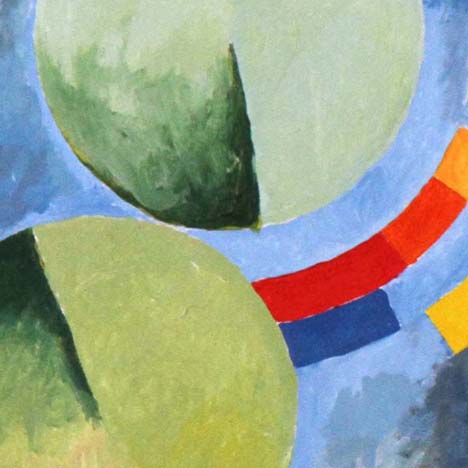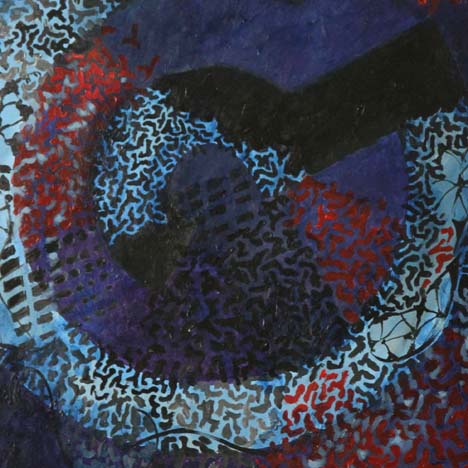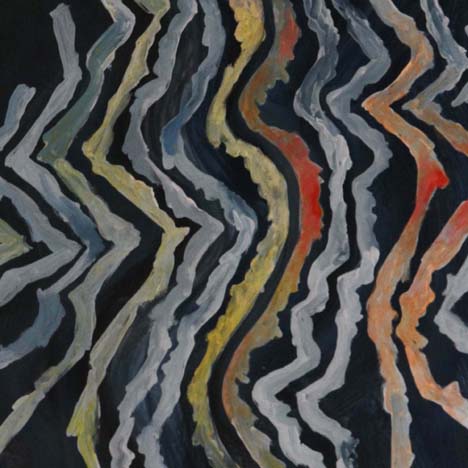Movement and energy in handmade pictures
Movement and energy in handmade pictures
The dancers’ movements can viewed as energies that propel the circulation of the bodies around each other and that advance them in a line. Just as the tango dancers represent the use of muscles, the handmade pictures are the result of the painter’s body, hands and fingers moving. Paint is rubbed on the canvas with brushes, fingers and hands to depict these movements but also the dual motif: the movements of the body in the process of painting and the movements of the body in the tango dance.

Di Sarli: Casas Viejos
One strategy was to take a bird’s eye view to help create a sense of newness and alienation to make it possible to somehow depict the dancers’ energies. The inner part of the circles studies how the dancers create circular movements in their own bodies, as represented by the fading colours. The brightly coloured circular ribbons underline the forces of energy that create, in their togetherness, movements across the dance floor.

Di Sarli: Bahia Blanca
The second strategy was to try to simplify the dancers into an abstract symbol, like a pictogram, thereby totally removing any clear resemblance to actual people to see how an unadorned symbol could represent the energy and movement. A classic lace pattern was used to add feminine energy to the more masculine symbol. The different pieces of lace varied in structure, colour and form to create the feeling of energy and movement.

Di Sarli: Racing Club
The third strategy was to view the dancers by standing beside or behind them to look at their energy and movement. The dancers merged into each other, the complexity of their energies transformed into lines that vary in strength, colour and length, thus representing the movements.
These three strategies were developed and then transformed into the final acrylic paintings.
.
|